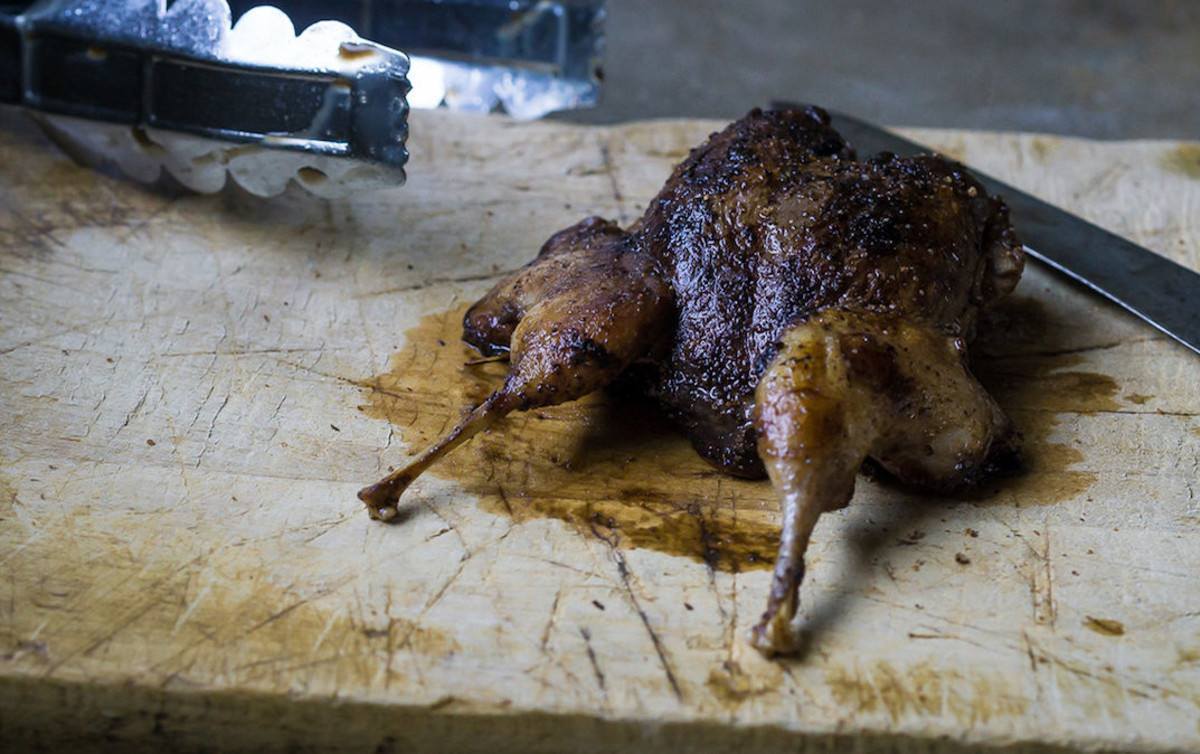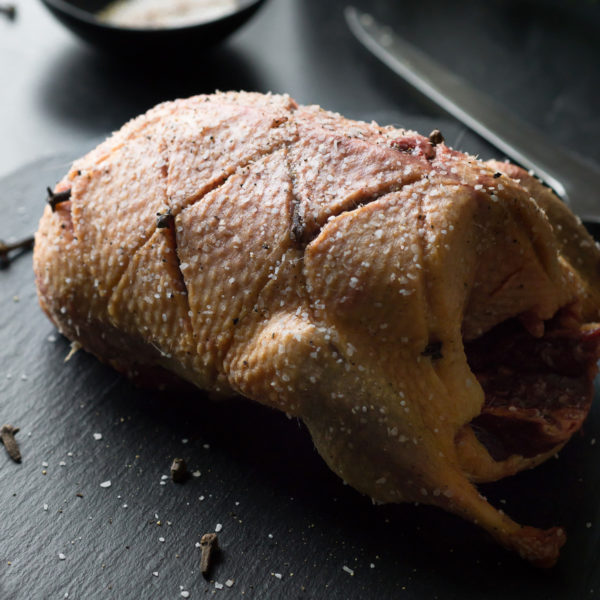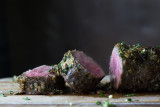
On special occasions, one of my favorite things to serve is plucked game birds. Cooking an entire bird can present a few challenges, but none are greater than getting skin that’s the perfect texture without overcooking the meat. Since keeping the skin on a bird adds moisture and flavor, learning how to work with it is worth the effort.
If you roast a store-bought chicken or turkey, you’ll almost always get crunchy skin with little effort. On a wild bird, the skin can easily turn out leathery and chewy.
There are significant differences between wild and domestic poultry. Wild game has less fat, which causes the meat to cook much faster. Fat helps baste the outer skin, which aids the browning process.
In addition, the connective tissue in wild game is more developed. Their skin is stronger and has more collagen that needs to break down. Because of this, it can be almost impossible to get an old tom’s skin crispy.
That doesn’t mean you should quit plucking your wild birds. Over the years, I’ve discovered some useful tricks to help manage this dilemma and improve the texture of the game bird skin.
The most crucial thing to understand is that dry skin equals crispy skin. Since the skin is made up of mostly water and collagen, any moisture resting on or in the skin will steam when introduced to heat. You might be familiar with the unwanted rubbery texture that results from this.
To mitigate this issue, you should pat the skin dry with paper towels, although most times that’s not enough. To appropriately dry out the skin you will need to use salt. Salt can help transform meat from dry to juicy, aid in preservation, and draw moisture out of the skin.
Initially, salt begins its magic by pulling juices out of the meat. Over time, if left to rest, it will break down the protein structure that allows those liquids to be re-absorbed. The re-absorption process doesn’t happen immediately and you might need to wait 24 to 72 hours. This brining process helps the meat retain more of its juices when cooked.
When salt is applied directly to the skin it draws moisture out, which is necessary if you want crunchy skin.
A traditional wet brine works wonders on a whole, skinless bird. However, if you leave the skin on, it’s better to rub the meat with a dry brine, or just plain sea salt without any water. If you want to add a variety of flavors, mixing spices in with the salt makes a great dry rub and it will have a similar effect as a wet brine.
When adding salt to your bird, be cautious to not go overboard. Too much salt results in a cure, which will dry out the meat. Instead, use just a little bit more than what you would typically use to season the meat.
You’ll need enough salt to make a difference, but not so much that you should have to rinse it off before cooking. After all, the point is to dry the skin and it wouldn’t make sense to rehydrate it after the drying.
When salting, sprinkle a pinch over the surface as well as in between the skin and on top of the meat. Before you go to cook, pat the meat and skin down with paper towels to dry juices and wipe away excess salt.
If time allows, rest the salted bird in the fridge for one to two days before cooking. It’s best to leave it uncovered to allow for plenty of airflow. The ideal scenario is to find a makeshift chicken roaster that will enable you to prop the bird upright. I’ve used everything from cans to bottles to do this, but laying it breast side up on a cooling rack will suffice. Place a sheet tray underneath to catch any juices that drip off.
After a day or two in the fridge, the skin will not look pretty. Don’t worry, if it appears dry, wrinkly and perhaps has white spots leftover from the mineral deposits, then you’re on track.
When cooking, be sure to use a dry cooking method over high heat. Don’t add any liquids to the roasting or sauté pan that might cause the meat to steam.
To get beautiful, golden skin, a chemical process between amino acids and sugar needs to take place. This is called the Maillard Reaction, where caramelization, intense flavors and delicious aromas start to form. This reaction takes effect at high temperatures.
Earlier I mentioned that wild game cooks faster than domestic meats, leaving a small window of opportunity to achieve the desired crunchy texture. This means that if you want to have the same results (juicy meat and crispy skin), you should increase the heat because it takes less time to cook to internal temperature.
The smaller the bird, the higher the heat will need to be. I cook pheasants in the oven at 425 degrees, and even smaller birds at 450-500 in order to brown the skin without overcooking the meat.
You will also need to add a layer of fat to the outer skin when cooking. Because you’re cooking at high temperatures, use fat or oil with a high smoke point. Your options are avocado oil, grape seed oil, canola oil, coconut oil, ghee or duck fat. You will want to baste the meat with plenty of it before cooking.
Waterfowl are an exception to these guidelines. Unlike lean pheasants or quail, ducks can have a nice layer of fat under their skin, which needs to be rendered out. In these situations, it takes time to render and using too high heat won’t allow enough time to get a crispy outside.
It’s better to lower the heat just a little to allow that to happen and then broil with very high heat at the end. When searing breast meat, start with low heat to slowly render, and increase the heat to high to brown the skin after a couple minutes.
To aid in rendering, score through the skin of ducks or geese using a sharp knife in long, cross-hatch patterns. You want to cut through the skin and fat without piercing the meat.
Lastly, serve the meal as quickly as possible while the meat is still hot. If left to rest, the meat will eventually start to steam and re-hydrate the skin.
If something didn’t go quite right or maybe the bird you plucked is a tough old turkey, there is still an added benefit to keeping the skin on. You might not be able to eat it, but keeping the skin attached greatly enhances the juiciness and flavor of the meat. For me, having succulent meat to bite into is always worth the extra effort of plucking some feathers, crispy skin or not.






